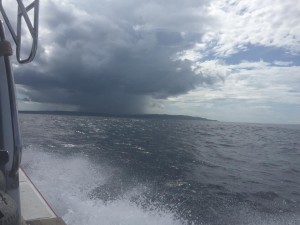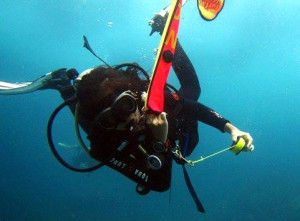Our PADI Divemaster course here at Blue Season Bali is quite a busy one. Students choosing the 1 month option are primarily improving their dive skills, theory, and guiding skills. Students with a bit more time in a 2 or 4 month program have more time to spend developing other skills such as night diving, underwater navigation and fish identification. However, we believe that all our interns should improve their knowledge of the marine environment. That’s why we have the ECO Divemaster internships now here.
Identifying fish is not difficult. Well, you can make it as difficult as you want. We focus on fish groupings rather than the scientific names – for the moment. Small features such as fin or body shape, pattern, colours, and tail help you to identify different species. But also think about where you saw the fish – in the sand, coral, out in the blue? What was it doing? Hunting, feeding, or hidden under a rock? Ideally you would visualize those characteristics in a quick drawing on your underwater slate. Identifying the fish back on the boat should be easy now!
To demonstrate the students ability to find and identify marine life, Henley our Internship Manager has created “Guiding Ninja Belts”. The more cool stuff you find, the higher you are on the hierarchy. Starting with the white belt, you’d only have to find “easy” ones like butterflyfish and surgeonfish. Next is the Salmon belt, with triggerfish and groupers. The Green belt, with a stingray and a cushion star; and at the top, the highest level of spotting marine life (the Champions League of guiding workshops): the Gold Ninja Belt. Find a Mola mola, ghost pipefish, or even a pygmy seahorse. I’m curious which belt you are at the moment. Join us in Blue Season to find out yourself!




